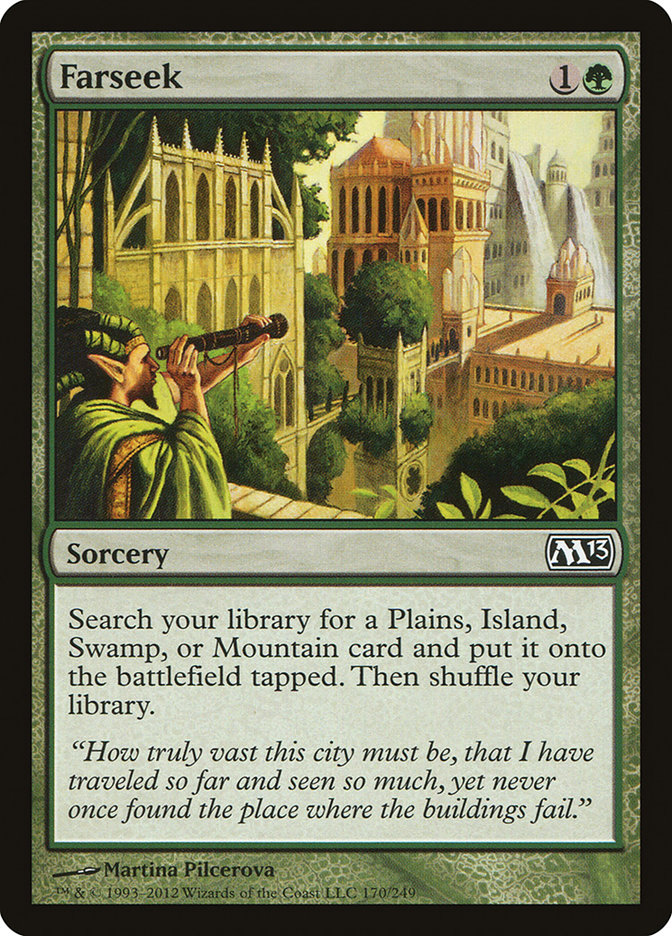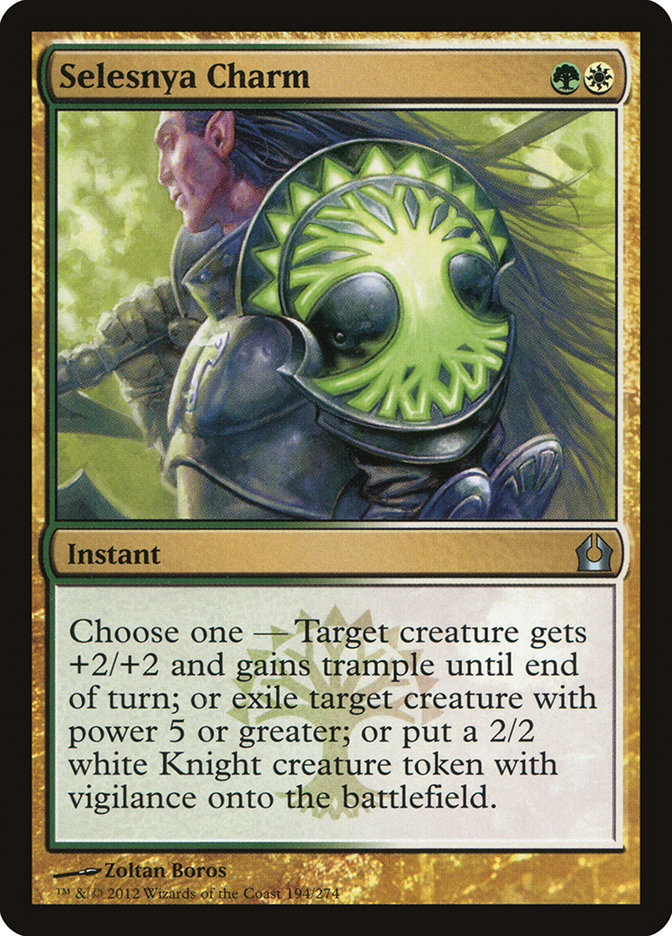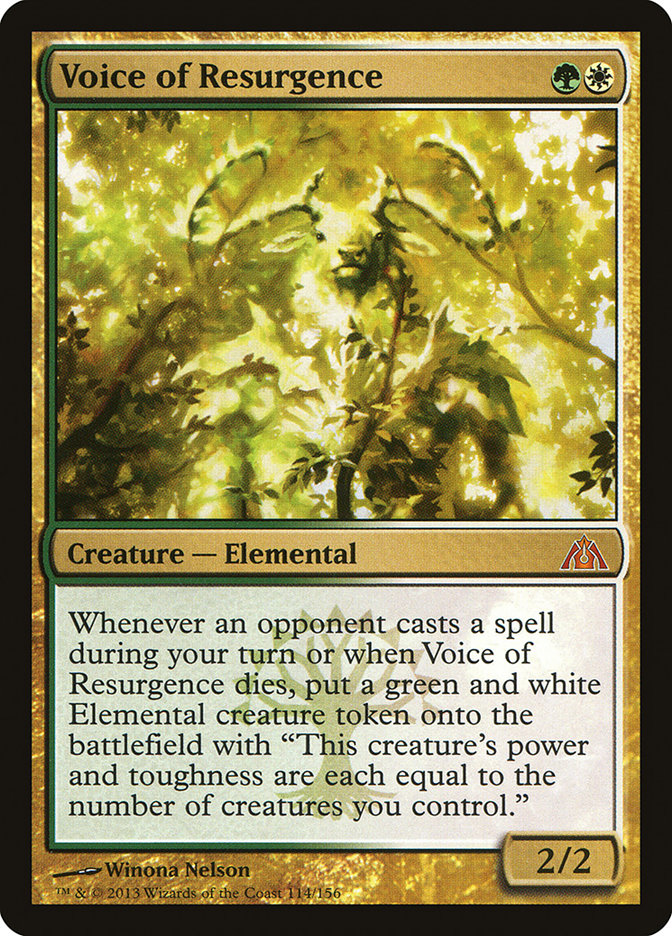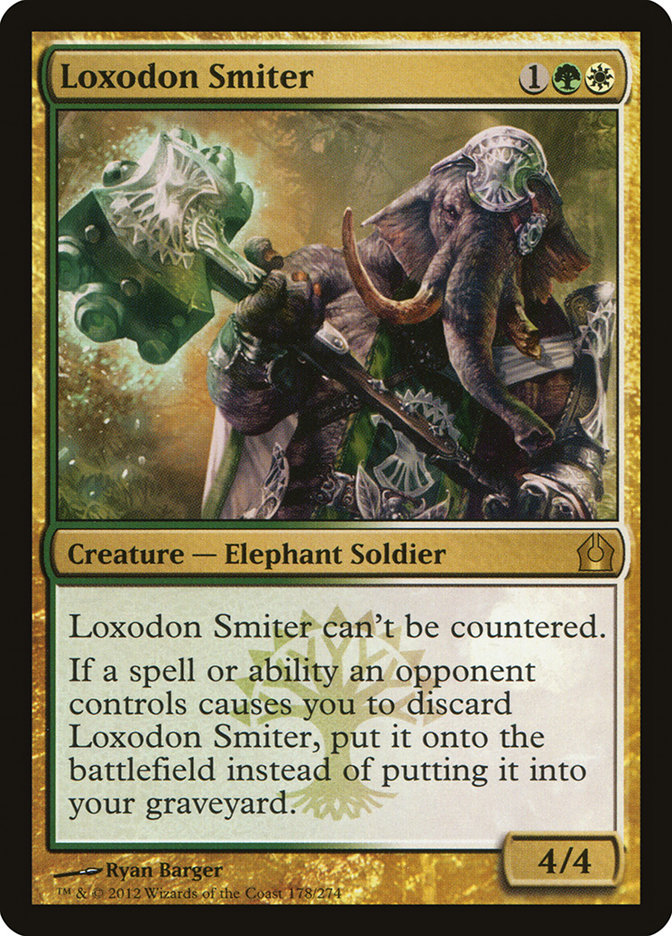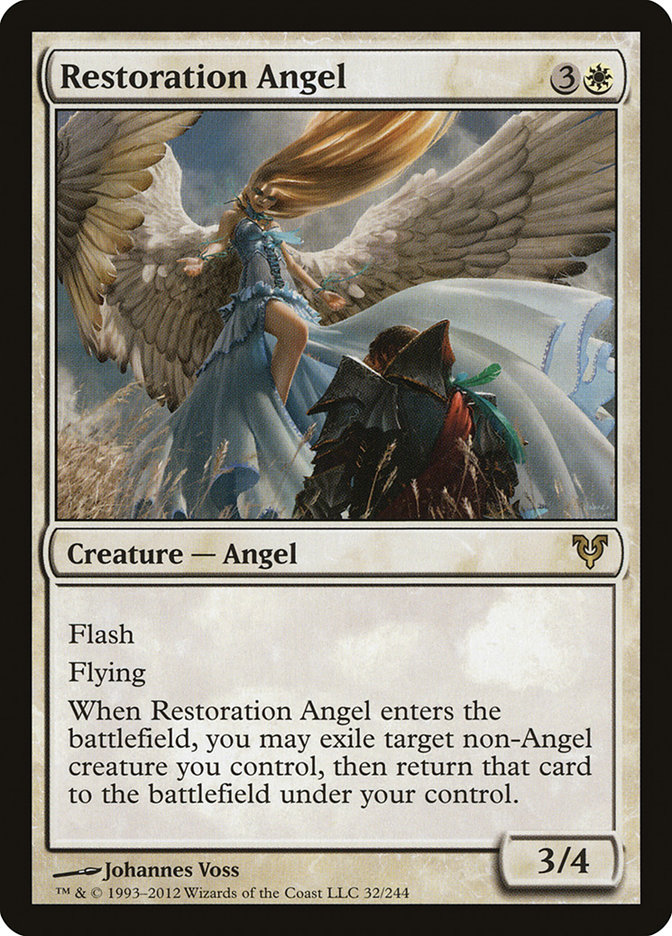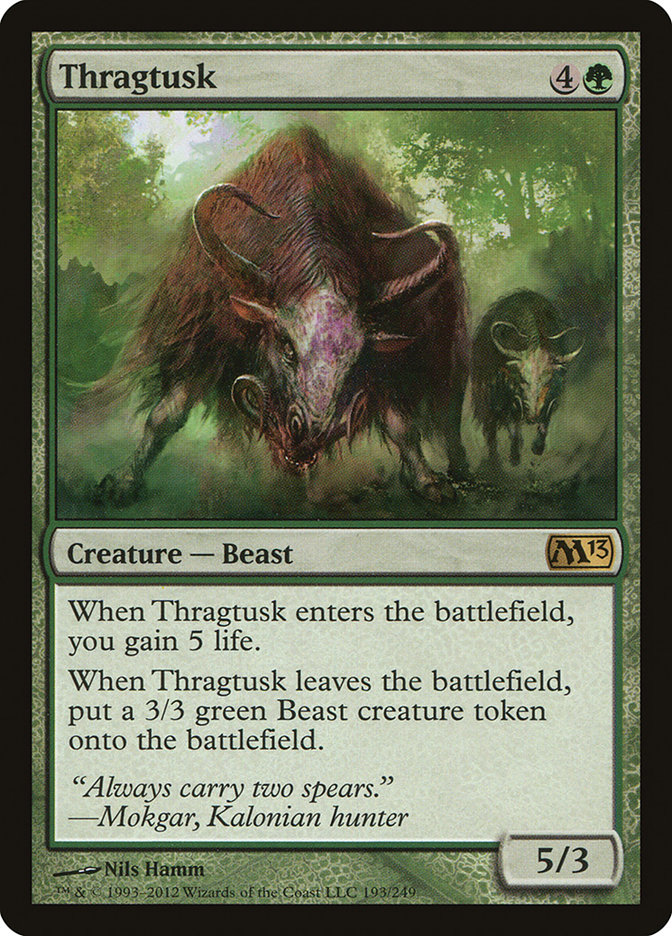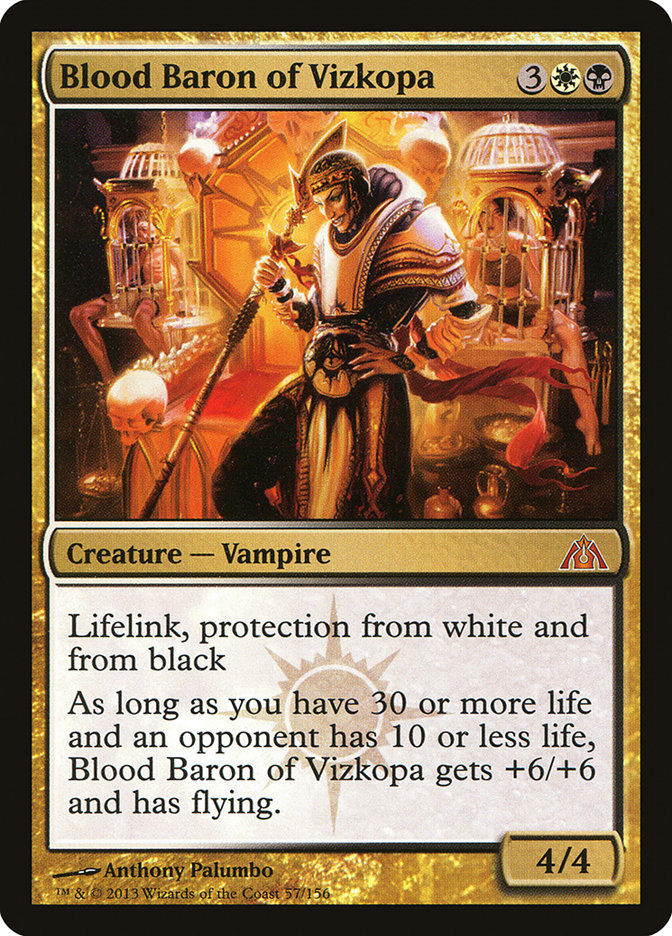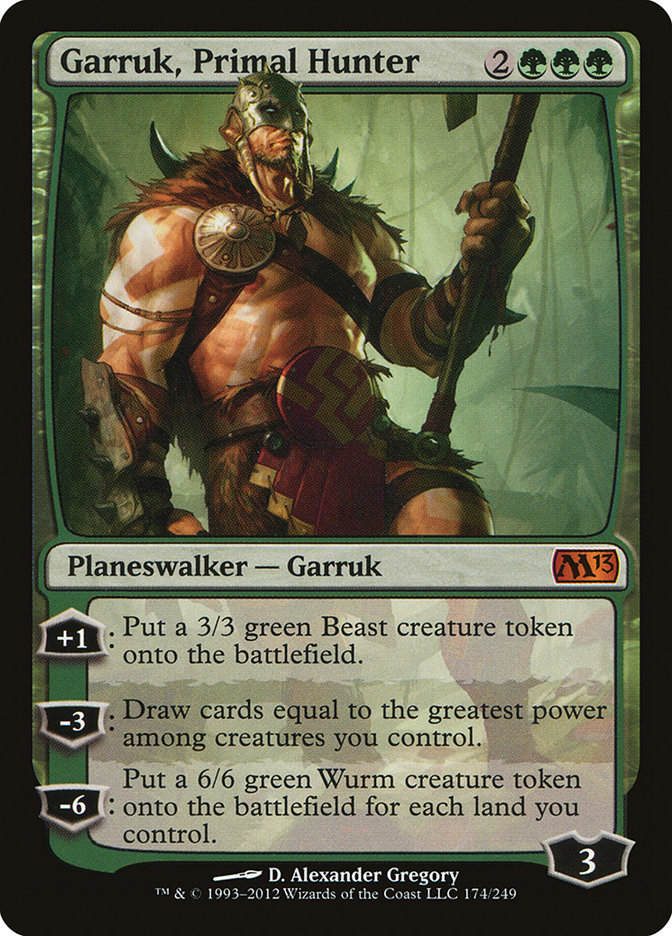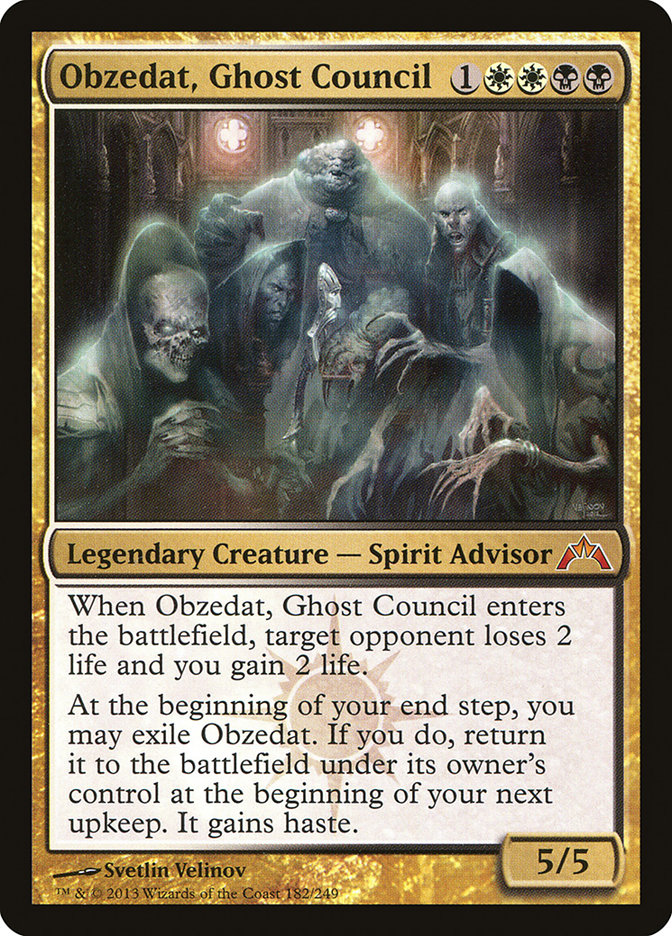Last week a number of writers talked about Blood Baron of Vizkopa as a potential place you want to be in Standard. Blood Baron of Vizkopa singlehandedly beats multiple decks—because these decks have so many black, white, or black-and-or-white gold creatures, they can’t attack through it and can’t effectively block it. Because of the lifelink, they can’t race it. Blood Baron of Vizkopa dodges almost all of the point removal in the format besides Mizzium Mortars, making it a sweet point of single-card efficiency.
As a lifelink card, Blood Baron of Vizkopa can act as a stand-in for Thragtusk on five, with life gain essentially on suspend 1; it costs a similar amount of mana to Obzedat, Ghost Council and can do a fair Obzedat impression. Instead of relying on Obzedat’s phasing-like ability to dodge removal, Blood Baron must lean on its protections, but when rumbling it can gain a similar amount of life (if deal a little less). Make no mistake: Blood Baron of Vizkopa is probably a less powerful card than either Thragtusk or Obzedat—but the world has conspired to give it a sweet spot.
The fundamental problem with Blood Baron of Vizkopa (which isn’t really a problem but a quality of a 4/4 creature for this cost) is that you kind of have to play it in a midrange deck. If you are going to play a five-drop (or bigger) in an offensive deck, it has to be something like Thundermaw Hellkite or Aurelia, the Warleader: uber offensive, utterly stacked in the lower right, and often hasty. To wit, Thragtusk is probably the overall best creature in Standard, and it sees little to no play in offensive decks. Thragtusk does a lot—just not necessarily what they need.
On the other end of the spectrum, you don’t want to get too slow without compromising your deck’s position to The Prime Directive. An alternative to Jund, sure; there is more than one kind of midrange deck. That said, you don’t want to be either a bad Junk Aristocrats or a bad Junk Reanimator. Blood Baron of Vizkopa might be contextually powerful in Standard, but as a five it is not purely on par with a seven like Angel of Serenity.
Without going too far down the rabbit hole, I [also] tried a Junk deck a la the G/W Ramp described in Shiny New Thing + Sideboarding, though I did not like it as much as this version. A green-based ramp deck is fine playing multiple fives, but if you are playing a deck that already packs Thragtusk and Garruk, Primal Hunter and Angels, at some point your extra stack of fives feels somewhere between redundant (but not in a “good Magic” way, rather a common parlance “redundant” way) and irrelevant.
I went instead with a model that is somewhere between a black mod to Naya Zoo and that draws on the circa eight fives of a midrange Naya deck (again, subbing black for red). To wit:
Creatures (25)
- 1 Borderland Ranger
- 4 Avacyn's Pilgrim
- 3 Restoration Angel
- 4 Thragtusk
- 4 Loxodon Smiter
- 1 Obzedat, Ghost Council
- 4 Voice of Resurgence
- 4 Blood Baron of Vizkopa
Planeswalkers (4)
Lands (24)
Spells (7)

Just a quick note on Restoration Angel before we go on. There are only three, along with oddball one-ofs Borderland Rangers and Ghost Council. Restoration Angel is of course an automatic four-of in a lot of decks similar to this one, but there just isn’t very much to blink in this deck! Yes, I realize the irony of cutting a Restoration Angel for a blinkable 187 creature. Sure, you can unlock the Thragtusk achievement (I did that like three times tonight) but waiting around on your mana to play Blood Baron first is… Well, it’s not the best exactly.
On the other hand, this deck plays almost all the creature cards I just want to play in this format: Voice of Resurgence into Loxodon Smiter into Thragtusk and Blood Baron of Vizkopa. When you hit your curve against a beatdown deck, it’s almost like playing Vs. System. They play something, you play the thing that is a half-card better for two or three turns, and it’s awesome. Either they are blowing cards to get in or not attacking at all. With the exception of one missing Minotaur, these are the guys I want fighting in my gang. I really love Boros Reckoner in this format, but obviously this deck isn’t the right colors to support a (W/R)(W/R)(W/R) on turn 3 and under pressure.
This deck can pursue multiple different lines of proactive play that are all difficult for different opponents to deal with. That is, Voice of Resurgence against Flash-type decks, Loxodon Smiter (especially on turn 2) against beatdown decks, and acceleration into fives in matchups where you have time to win via card quality.
This deck isn’t a “ramp” deck per se (it is about four Arbor Elfs and a couple of Keyrunes shy), but with eight early-game acceleration cards, it can generally support the higher-end fives and sixes. As much as I like Blood Baron of Vizkopa, I still like Thragtusk the best at five, and if I am playing Loxodon Smiter in this kind of a framework, I probably want Garruk, Primal Hunter.
This deck can get very similar early-game draws to Naya Zoo. Loxodon Smiter if you hit your Pilgrim; Voice into a progressive board if you don’t hit it and just need to play lands. Instead of plowing into Thundermaw Hellkite, you will tend to play Thragtusk or Blood Baron of Vizkopa to stabilize—at which point you probably have the best creature on the battlefield anyway. Among other highly interesting points, in the rare case that your opponent has a better creature than Blood Baron of Vizkopa, it will often be a creature that can’t target your Blood Baron (Angel of Serenity), can’t block it (Aurelia, the Warleader), or both.
One thing I was a bit worried about early on was playing against other midrange decks (Jund is the most important), especially given the fundamental softness of expensive green creatures to Olivia Voldaren, but again Blood Baron of Vizkopa doesn’t cooperate very well. You can still drop a Blood Baron to their Mizzium Mortars (or a lucky Bonfire), but your Selesnya Charms can contain Olivia so it can be fair-sies. I have found Jund very winnable.
A major incentive of this strategy is to slow down the not-fastest attack decks (The Aristocrats and its family members) with blockers various (especially Blood Baron of Vizkopa), and we accomplish that pretty well. I was actually pleasantly surprised to find the deck competitive against Flash-type decks (Cavern of Souls) all the way to Junk Reanimator (but you have to figure out when you have to commit to shifting into beatdown because they are generally more powerful than you).
I never played against any kind of infinite or combo Reanimator, but I assume you are not going to win very often. The worst situations I found (i.e., the games I lost) tended to hinge more on playing a deck that errs on the side of more good creatures rather than the flexibility of removal. Creatures aren’t good all the time, and in a deck of my specialists, that choice can make bad topdecks even weaker.
Black, green, and white colors can give you access to cards like Tragic Slip, Abrupt Decay, and Putrefy, but I chose to eschew all of them in favor of just guys. You can therefore end up in a standoff with a creature like Mayor of Avabruck and eventually see the Mayor flip—and you might eventually be outnumbered by his little dorks. The sideboard doesn’t help much against these decks because I picked cards that are largely good against Bant Hexproof instead of cards that can aim normally. This deck tends to try to deal with [other] beatdown by blocking, and if the opponent doesn’t cooperate (i.e., doesn’t run their guys into your value blocks), you might end up on the wrong end of a big standoff.
I built the sideboard with that in mind. The idea is to pull chunks of cards out of the main (i.e., Blood Baron of Vizkopa is actually just a worse Thragtusk against most control decks) and replace with chunks of similar utility. Slow control decks that win with Nephalia Drownyard don’t really respect your Blood Barons like Junk Aristocrats has to; Obzedat and Staff of Nin will for sure come in for two of them. Selesnya Charm is a fairly low-impact card against a Bant Hexproof deck; you might side all of those out for Tribute to Hunger as a three-for-three.
There is a huge set of anti-Bant Hexproof cards: edicts in the form of Tribute to Hunger and Liliana of the Veil, with Unflinching Courage to race (or to race other green decks). Getting the drop on a Bant Hexproof deck with a second-turn Liliana of the Veil is just awesome, as I’m sure you can imagine. Last week I got shredded in a game 1 with a Fog deck and wracked my brain for what I could bring in to make my deck relevant. Voice of Resurgence was getting lots of tokens, but if I could never successfully rumble in, what was the point? Ground Seal was for sure coming in for Snapcaster Mage—and then I saw those planeswalkers.
I played this deck, lose ageinst Jace fog!!, goddraw gruul, aristcrats. I still thinking
deck was good^^ pic.twitter.com/48Hc2TJzXd— TomoharuSaito (@TomoharuSaito) May 28, 2013
Let me tell you about second-turn Liliana of the Veil against Turbo Fog.
That is actually the dimension that makes me like this deck more than Naya Zoo. You can actually force a control deck, or Fog deck, or removal-heavy weird deck to care about what you are doing in a way that Domri Rade or just pure creatures can’t. At some point, you are presenting creatures, and they are dealing with creatures; even if this is a creature-heavy deck, a card like Liliana of the Veil (and alternate win conditions like Staff of Nin and Obzedat) have been important.
Ground Seal got the nod over Rest in Peace mostly because this deck can have some inconsistent draws and another cantrip to smooth things along on turn 2 can help flatten those out. Plus, it is outstanding against Snapcaster Mage—good, but maybe not good enough to waste a card on, which is exactly where you want the fight to be.
Is this a perfect build?
I don’t think that it is going to rewrite the format the way that Flash did or wake it up the way Bant Hexproof did, but the deck has excellent defensive draws against a wide number of performing decks while giving Blood Baron a dedicated home. That is actually the perfect recipe for a one-week spike. Been there.
Some tactics (and a little strategy):
If I don’t have a clear reason to need three mana on turn 2 (i.e., I don’t have a Loxodon Smiter), I will often play my Temple Garden / Overgrown Tomb tapped and pass. The default / scripted play tends to be to force down two points to hit the Pilgrim on turn 1. I will do that sometimes, but I have found myself slow playing more and more.
There is one Godless Shrine in the mana base, and it is for the Farseek. You can go ahead and get it in most cases unless you are gripping Garruk, Primal Hunter with an otherwise dubious collection of mana. In an earlier version of this deck, the Godless Shrine was more dangerous due to the presence of Arbor Elf, but you don’t have to worry about that.
By far my favorite play is to bait out a Ghor-Clan Rampager bloodrush and then spike the two-for-one with Selesnya Charm. Strategically, you have Have HAVE to hold this card for Olivia Voldaren against Jund and Grixis. Don’t forget you can just pump and rumble at and then draw an extra two with Garruk.
Decent early pressure, but I am used to being able to pants this guy up in a Bant Hexproof deck. Honestly, it spends a lot of time in the sideboard.
There is exactly one of this the deck.
I really warmed to this creature while playing Bant Hexproof. Its presence is a maindeck concession to wanting to beat aggro.
I have actually found this card to be a standoff-breaker more than anything else in this deck. Blood Baron of Vizkopa doesn’t usually fly, and because you don’t have an excess of removal, standoffs can crop up. Restoration Angel comes over for three a bunch of times in those games.
The lucky thirteen fives. Often you will find yourself in a dilemma about which to cast. Usually Thragtusk is the best first cast, especially if your opponent has something. I tend to play Cavern of Souls as late as possible, and more than half the time it starts on “Beast.” Garruk is the cast if you want to play a long game, though sometimes you won’t have the GGG. Obviously slam down Blood Baron in the matchups where the opponent can’t beat it. That is the whole point of playing this deck.
The one Obzedat is the hardest card in the deck to cast. I would recommend being very cautious with your Cavern of Souls if you can; waiting and naming “Spirit” is often the right play and can be devastating if the opponent doesn’t know what’s coming.
May your Blood Barons be 10/10 flyers (mine never are, but they’re still good).
LOVE
MIKE


